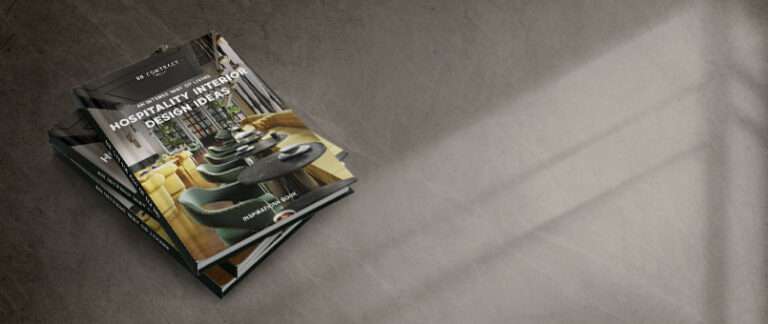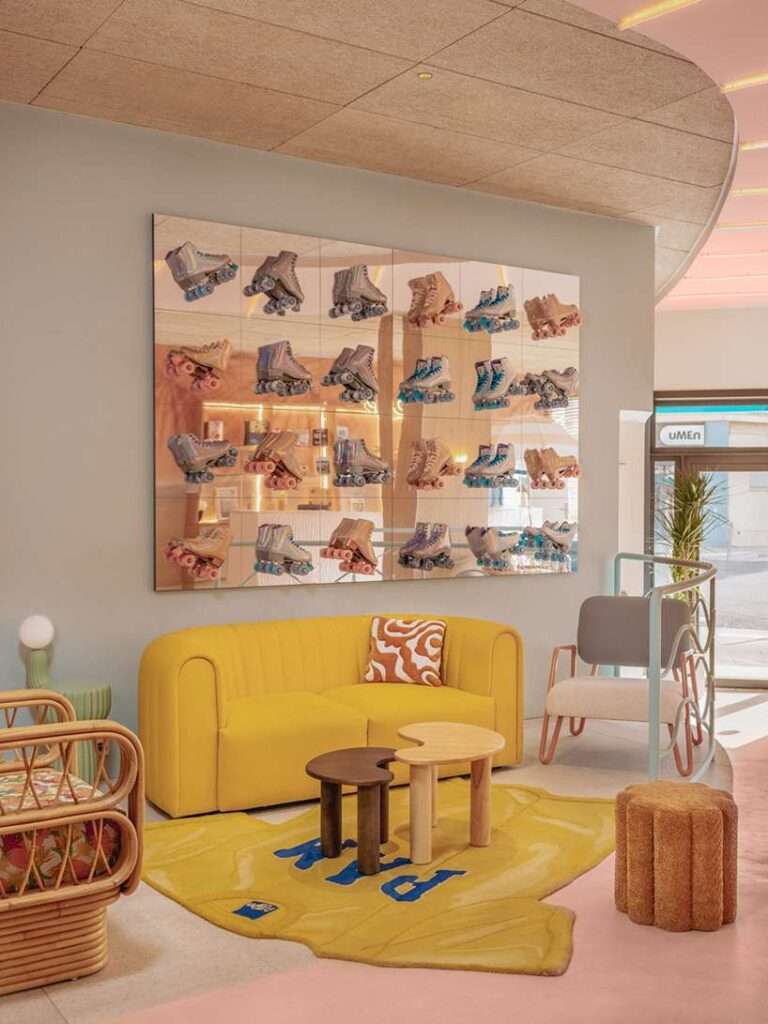Did you know the average mature tree sequesters about 48 pounds of carbon dioxide per year, and perhaps more importantly, stores 100 pounds of the pollutant over its lifetime? Trees are essentially nature’s carbon capture system, important both singularly and in sum as what many call the “lungs” of the planet. Numerous researchers and designers are looking toward biomimicry to tackle pollution and climate change utilizing several mechanisms already found in trees and other photosynthetic species, including architecture and design innovation firm ecoLogicStudio’s towering tree-like sculpture aptly named, Tree.ONE.
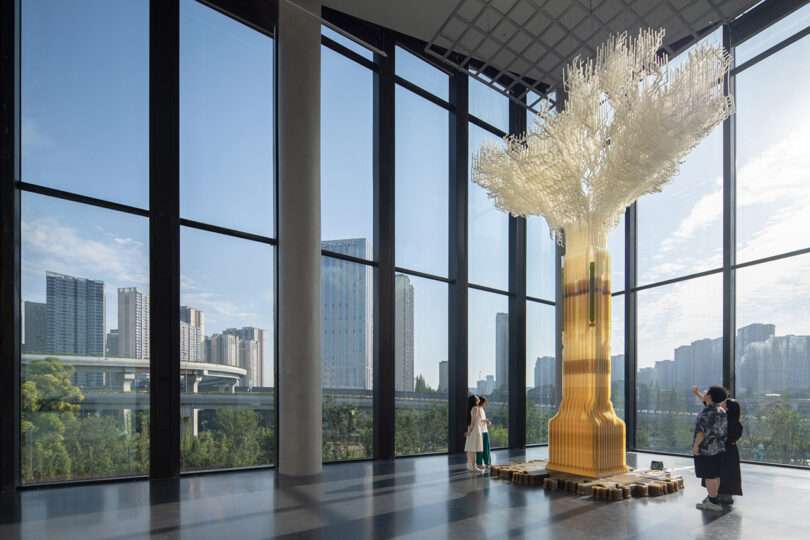
Unveiled at the Chengdu Biennale 2023 and commissioned by Hyundai Motor Company, Tree.One’s mesmerizing 3D-printed form appears like pixelated flora plucked from the landscape of a Minecraft level. The “tree” is composed of three distinct components created through robotic printing: Roots, Trunk, and Canopy. In sum, the entire form operates as a “living” system in service of capturing carbon utilizing the cultivation of liquid microalgae within four intricately designed bioreactors, each integrated into the venous form within Tree.ONE’s pleated “Trunk” structure.
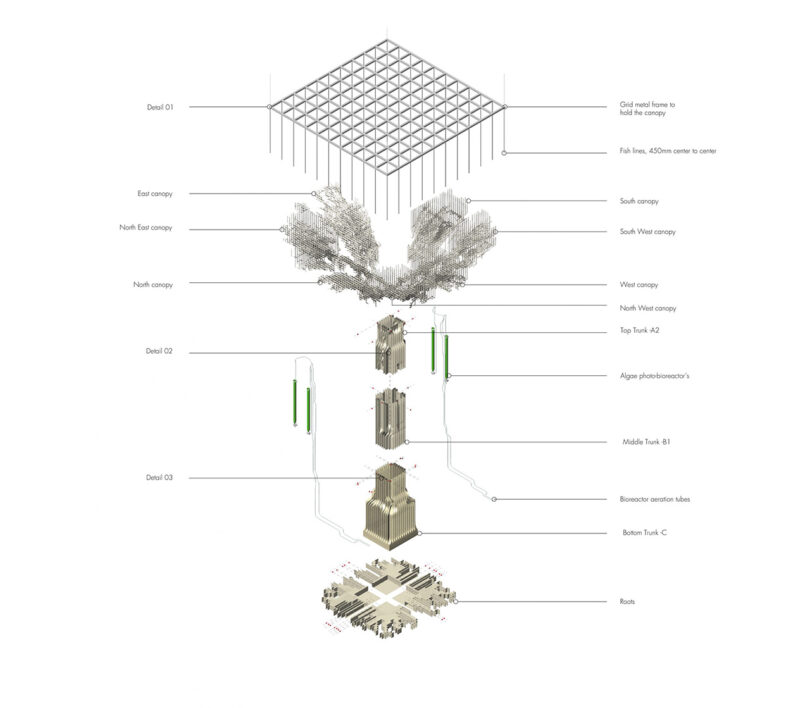
Tree.One’s fascinating pleated trunk design has numerous real world counterparts, most notably the buttress root and trunk morphology of trees evolved to grow in marsh-swamp ecosystems. Much like its real world counterpart, Tree.One’s form is conceived to offer secure and support for the towering sculpture’s 3D-printed aeration components comprising robotically 3D-printed algal biopolymers, lab grade borosilicate glass, and living cultures of chlorella in a bright green liquid medium.
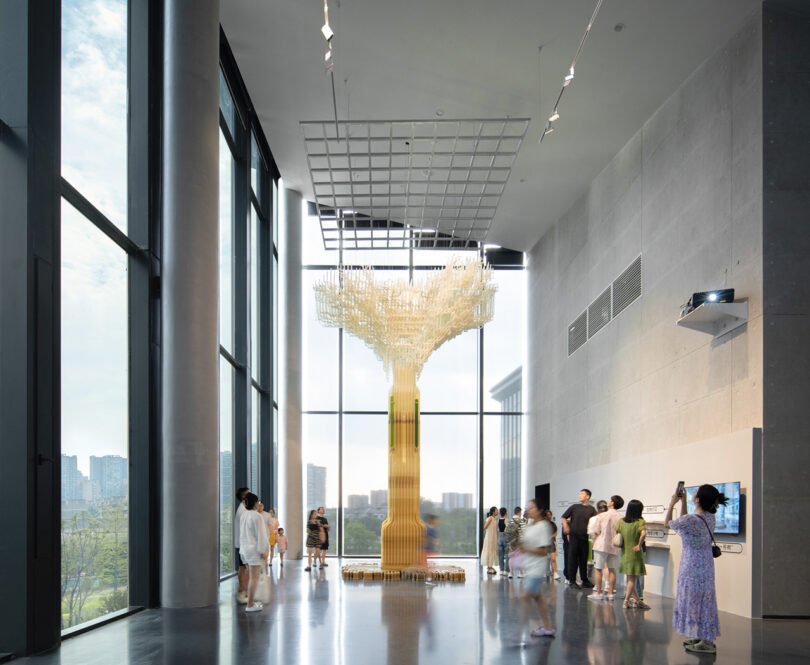
Tree.ONE’s sculptural system is engineered to capture and store carbon dioxide daily while purifying urban air through Chlorella algae cultures. This system is elegantly integrated within the sculpture’s aesthetic. The trunk’s unique pleated morphology, inspired by the fibrous trunk of actual trees, serves artistically and functionally, providing support for 3D-printed components that secure and organize the aeration network. This union of form and function exemplifies the sculpture’s synergy between art and utility.
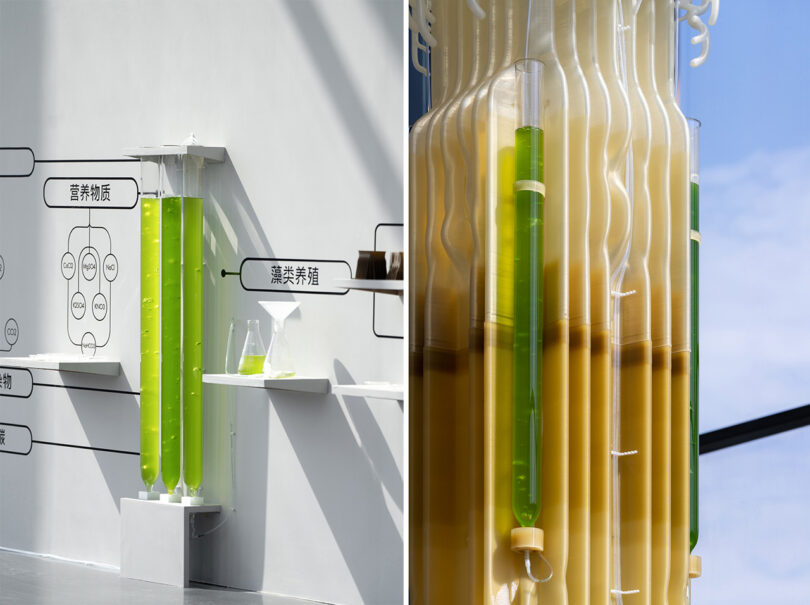
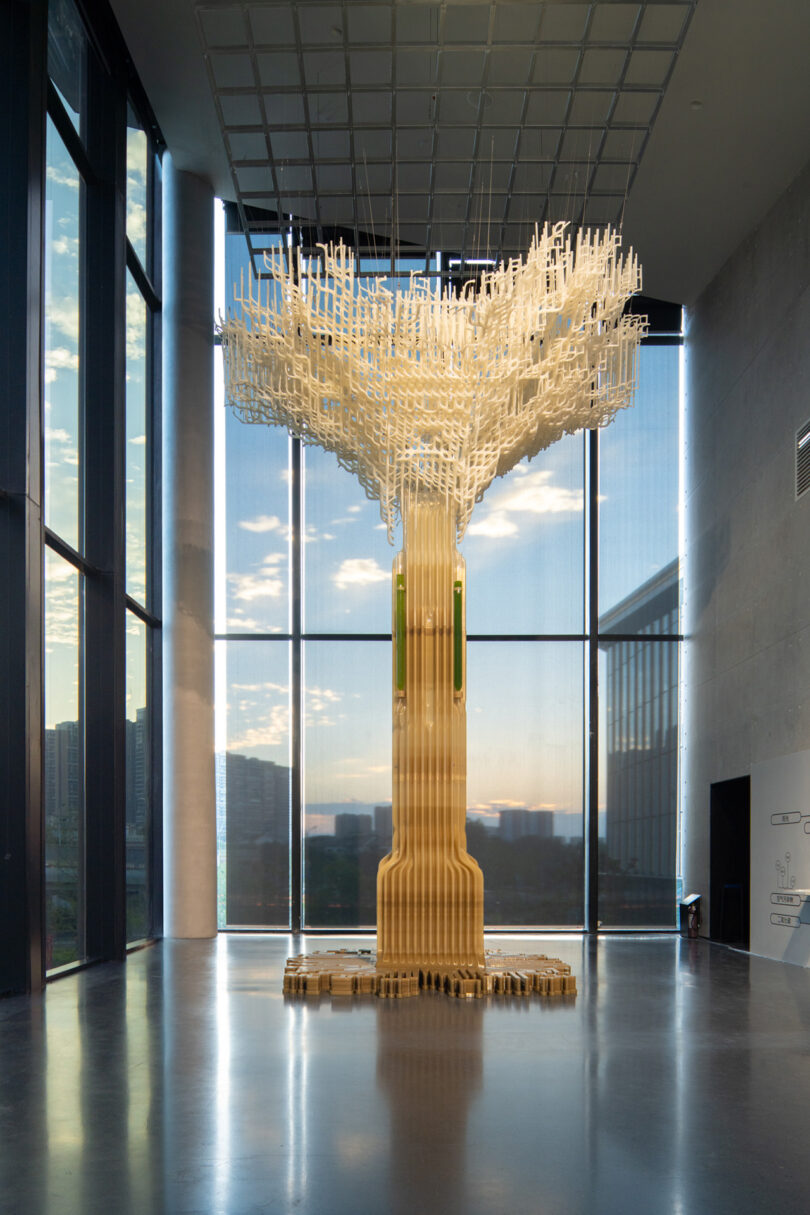
The intricate canopy topping the design while poetically realized, operates merely as a visual element, and requires an overhead metal grid to hold up its expanse.
A single tree does not make a forest, and thus Tree.One is also accompanied by an exhibition displaying bioplastic samples, algae-based biomaterial filaments as building materials, an explainer about algae cultivation system, and other small-scale 3D-printed biodegradable prototypes to help educate visitors about the concept of transforming urban centers into “forests” cleansing the air.
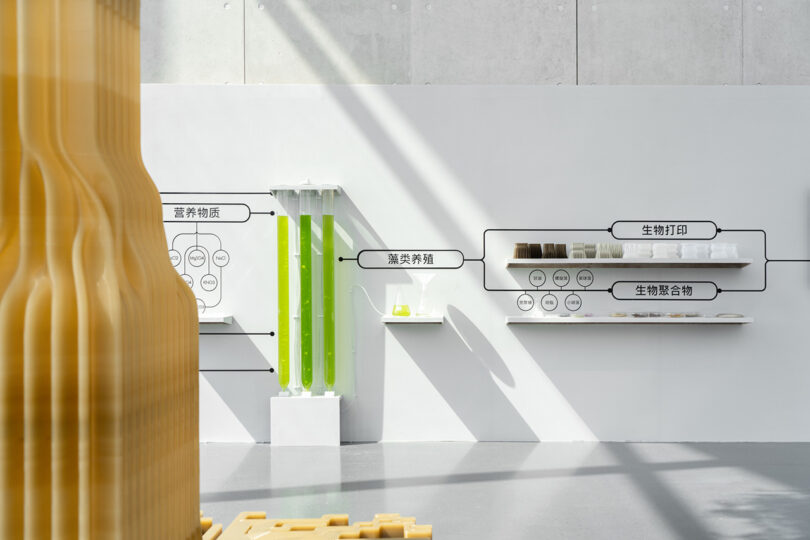
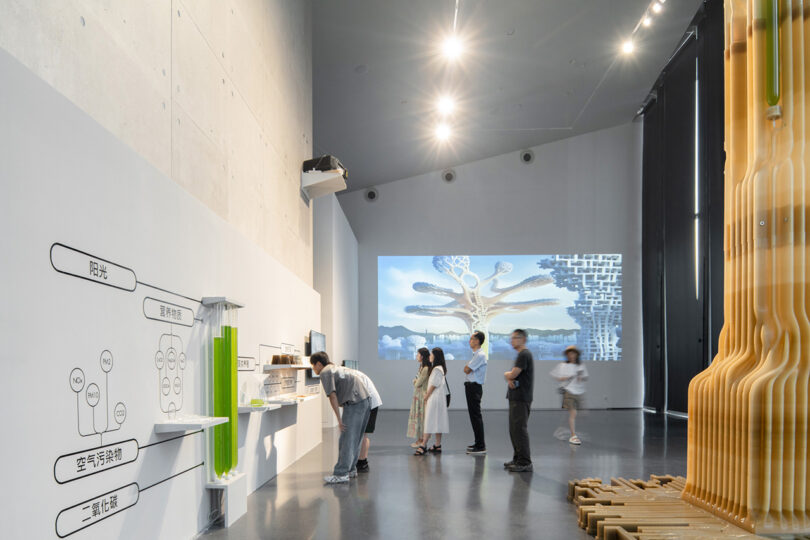
An AI-generated video titled “Tree.One City” is projected onto a nearby wall in an ever-changing loop, showcasing various scenarios of an imaginary metropolitan city evolving into a carbon-neutral urban center populated by “sky-gardens, bio-buildings, and urban forests.”
Eco-technology is undoubtedly a field with immense opportunities with even more enormous hurdles to overcome in the efforts to stave off the worst effects of climate change. But one must make the argument it would be immensely most cost effective and beneficial for cities to reintegrate flora – including trees long decimated in once verdant habitats – native to their region rather than manufacture robotically “grown” simulacrums when nature has long already figured the solution so elegantly.
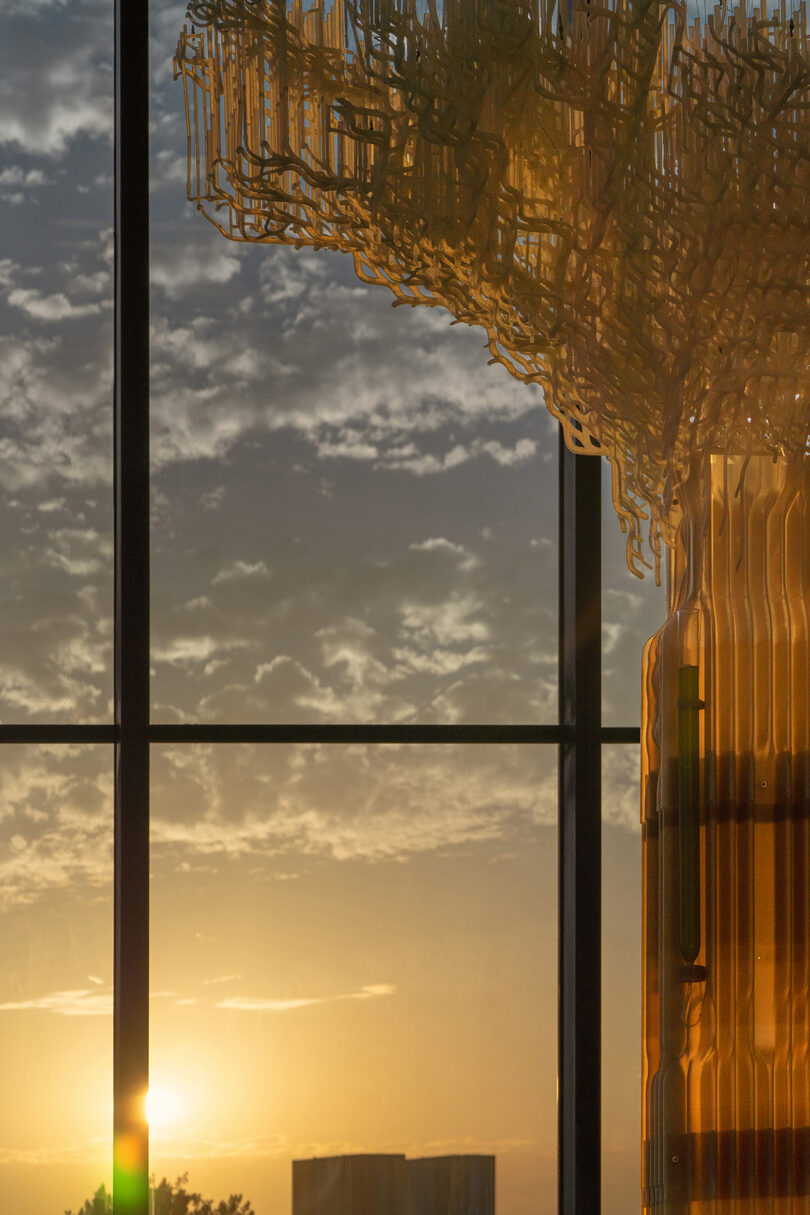
The Tree.One exhibition will be on display at the Chengdu Contemporary Art Museum in Chengdu, China through November 22, 2023.


